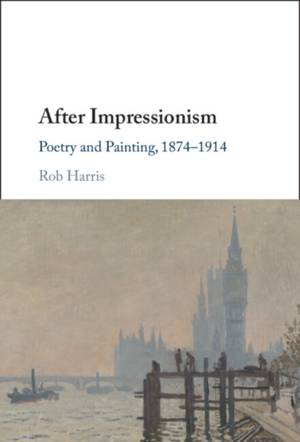
- Afhalen na 1 uur in een winkel met voorraad
- Gratis thuislevering in België vanaf € 30
- Ruim aanbod met 7 miljoen producten
- Afhalen na 1 uur in een winkel met voorraad
- Gratis thuislevering in België vanaf € 30
- Ruim aanbod met 7 miljoen producten
Zoeken
€ 128,45
+ 256 punten
Omschrijving
Impressionist painting was the dominant art form of its time, and one to which English-speaking poets were profoundly responsive. Yet the relationship between impressionism and poetry has largely been overlooked by literary critics. After Impressionism rectifies this oversight by offering the first extended account of impressionism's transformative impact on anglophone verse. Through close readings of the creative and critical writings of Arthur Symons, W. B. Yeats, Ford Madox Ford, the Forgotten School of 1909 and Ezra Pound, it argues that important ideas in the history of modern poetry-ideas such as decadence, symbolism, vers libre and imagism-were formulated as expressions of (or sometimes as antidotes to) impressionist aesthetics. In doing so, it suggests that impressionism was one of the crucial terms-often the crucial term-through and against which English verse of the late nineteenth and early twentieth centuries was defined. This title is also available as open access on Cambridge Core.
Specificaties
Betrokkenen
- Auteur(s):
- Uitgeverij:
Inhoud
- Aantal bladzijden:
- 246
- Taal:
- Engels
Eigenschappen
- Productcode (EAN):
- 9781009534789
- Verschijningsdatum:
- 18/12/2025
- Uitvoering:
- Hardcover
- Formaat:
- Genaaid
- Gewicht:
- 500 g

Alleen bij Standaard Boekhandel
+ 256 punten op je klantenkaart van Standaard Boekhandel
Beoordelingen
We publiceren alleen reviews die voldoen aan de voorwaarden voor reviews. Bekijk onze voorwaarden voor reviews.








